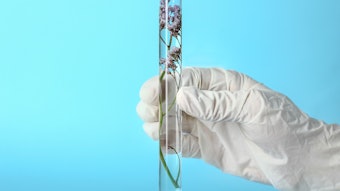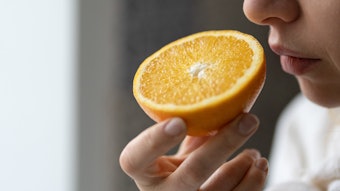An article in the Journal of Agricultural and Food Chemistry, published online October 5, 2010 and available through PubMed.gov, a service of the U.S. National Library of Medicine, National Institutes of Health, detailed the deodorant effects of coriander. The article, titled “Identification of (E,E)-2,4-Undecadienal from Coridander ( Coriandrum sativum L.) as a Highly Effective Deodorant Compound against the Offensive Odor of Porcine Large Intestine,” explained in its abstract, “The effective deodorizing compounds of coriander were identified by separating the volatile component of coriander, testing the effectiveness of each fraction against the offensive odor of porcine large intestine, and then identifying the compounds by GC-MS. The volatile component of coriander was first separated into six fractions (A–F) by preparative gas chromatography, and the deodorizing activity of each of these fractions against the offensive odor was measured. Fraction D, which showed the strongest deodorizing effect, was then separated into 12 subfractions by preparative GC. The deodorant activity of each subfraction was evaluated, and the deodorant compounds were identified by GC-MS. It was discovered that (E,E)-2,4-undecadienal was the most effective deodorizing compound. The deodorizing activity of (E,E)-2,4-undecadienal on the porcine large intestine increased as with concentration, reaching almost complete deodorizing ability at 10 ppb.” The article was authored by H. Ikeura, K. Kohara, X.X. Li, F. Kobayashi and Y. Hayata of the School of Agriculture, Meiji University, Kawasaki-shi, Kanagawa, 214-8571, Japan.
Coriander's Deodorant Effects Traced
Nov 16th, 2010










